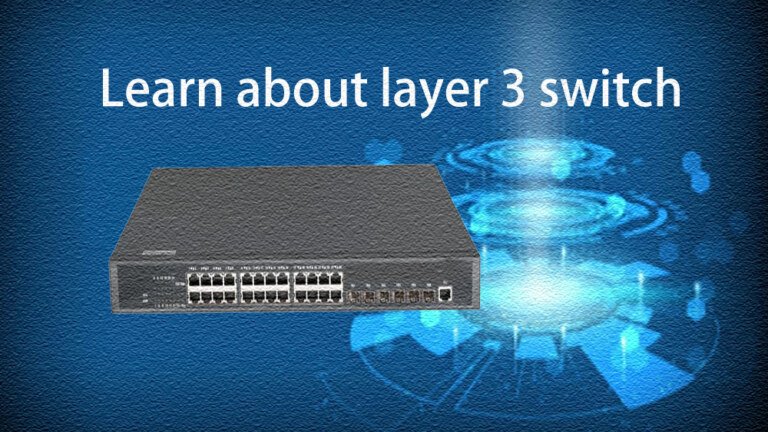Table of Contents
Toggle6 Tips on choosing the right optical transceiver
Fiber optic modules are essential in today’s networks, and the advanced development of module technology will continue to meet future data demands. To help you choose the right Optical Module for your network, here are six key factors to review with a Module/network systems expert before making a final decision. These technical and operational considerations will help determine the correct Module for any network application:
#1 Compatibility
#2 Wavelength
#3 Data Rate/Speeds
#4 Fiber Type
#5 Environmental Considerations
#6 Transmission Distance
Check on Compatibility
Before purchasing Modules, it’s essential to know what type of network equipment they will be used with and the architecture of the network. What will the Modules be plugged into? Determine the extent to which the host platform restricts third-party sources. Can you only use OEM Modules from the host, or is it open to other sources?
For each switch, line card, or any device the Modules will be inserted into, you need to know at least the following information:
- Manufacturer
- Model
- Software version running on the host device
Uptime is crucial, so it’s best to work with a trusted technology partner who can meet all your network needs, including products, equipment, network knowledge, and expertise.
Wavelength
In fiber optics, wavelength is one of the most critical factors. Wavelength significantly impacts the speed of the system, coverage range, compatibility with hardware, and other aspects of network design.
Generally, shorter wavelengths achieve higher speeds, while longer wavelengths allow signals to be transmitted over longer distances. You can consider the three most common wavelengths and how they affect range:
850nm signals can only transmit approximately 500m.
1310nm signals can transmit up to 40km.
1550nm signals can exceed 40km.
Data Rate/Speeds
Speed is a primary concern. When it comes to fiber optics, you can achieve extremely fast networks, but they come at a cost. Similarly, if you’re looking to save money, sacrificing speed is one of the simplest ways to reduce costs.
What data rate does your network need to operate? That’s the first question you must answer. Then, you need to consider the future and how your data rates will grow over time. When considering both aspects of data rates, you can choose the appropriate Module. Higher data rates don’t always mean a better network. Balancing your network performance requirements with cost/budget considerations is crucial.
While there are various Modules available to handle different data rates, the most popular Modules typically fall into the following data rate categories:
Fiber Type
How far does the signal need to travel? When choosing wavelengths, you’ve already considered some range, but there are more factors to think about. Single-mode (SMF) and multi-mode fiber (MMF) have a significant impact on range. Single-mode fiber covers greater distances but is more expensive, while multi-mode fiber offers cost advantages and higher data rates.
Is your cable distance from the signal source meters or kilometers? Additionally, what is the maximum rated distance of your fiber? These are crucial questions that determine most of your decisions. Pairing the right fiber with the right cable to achieve efficient and stable data transmission is paramount.
Environmental Considerations
Fiber optic networks operate in various environments. Data centers differ greatly from outdoor surveillance networks and have little in common with industrial facilities.
So, do your fiber cables pass through walls? Are they buried underground? Or are they simply connecting devices within the same room? How high are the temperatures? Are there corrosive elements? Are you concerned about dust or water?
There are many environmental factors to address. The most significant factor is temperature rating, which is divided into two operating temperature grades:
Commercial transceivers – Basic operating temperature: 0 – 70°C / 32 – 158°F
Industrial transceivers – Extended operating temperature: -40 – 85°C / -40 – 185°F
Transmission Distance
Different optical modules support varying transmission distances. Generally, multi-mode optical modules have much shorter transmission distances than single-mode optical modules and are also more cost-effective. For example, a 10GBASE-SR SFP+ optical module can only reach up to 300m, whereas a 10GBASE-ZR SFP+ optical module can reach up to 80km, highlighting the importance of determining your required transmission distance. Additionally, considering the attenuation and dispersion of optical signals during transmission, we recommend using optical modules that support distances slightly larger than your actual needs. For short-distance connections between devices within a rack, we suggest using high-speed copper cable products, which are more cost-effective than optical modules.
MVSLINK (Suzhou Weimei Electronic Technology Co., Ltd. ) is a 12+ years old optical module supplier with a factory, dedicated to providing high-quality optical modules and professional communication solutions for all customers, offering 1 piece OEM service.
For more information or a quote, contact us or visit the product page.




